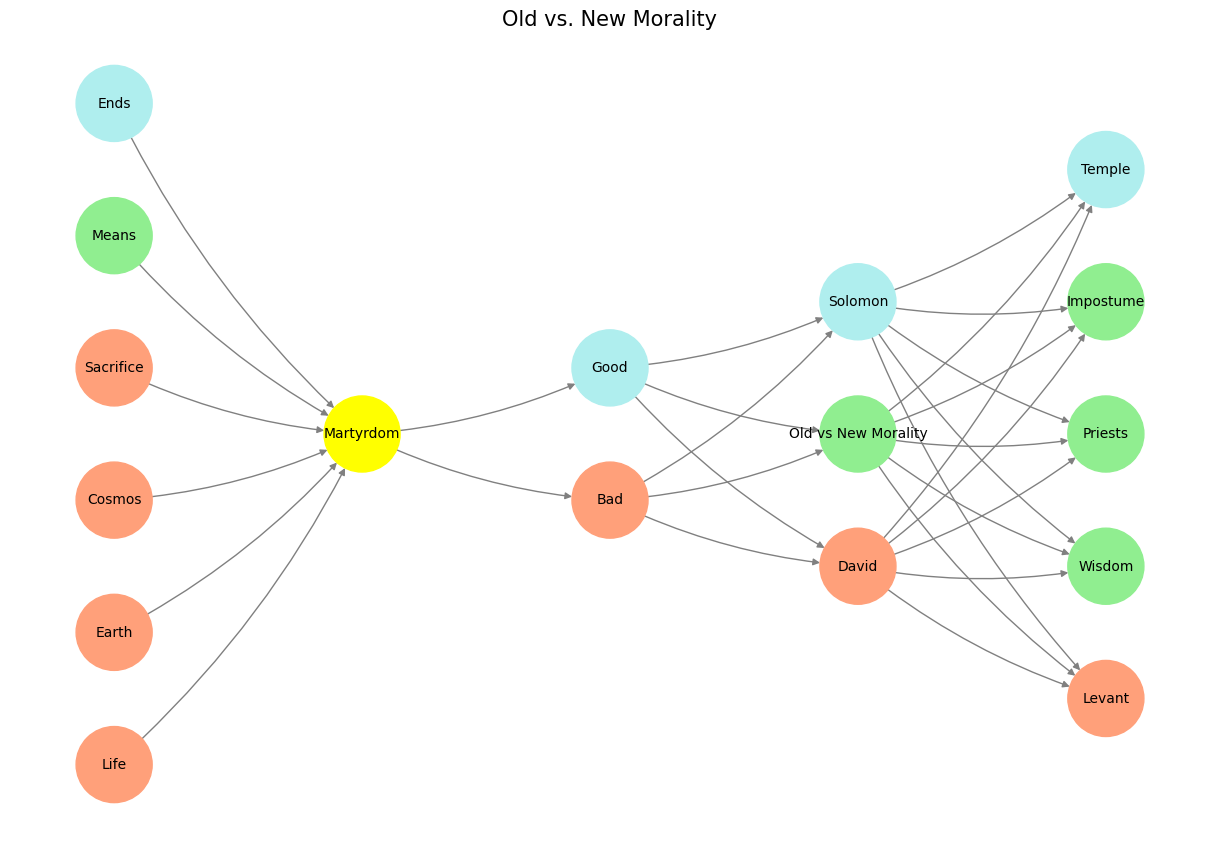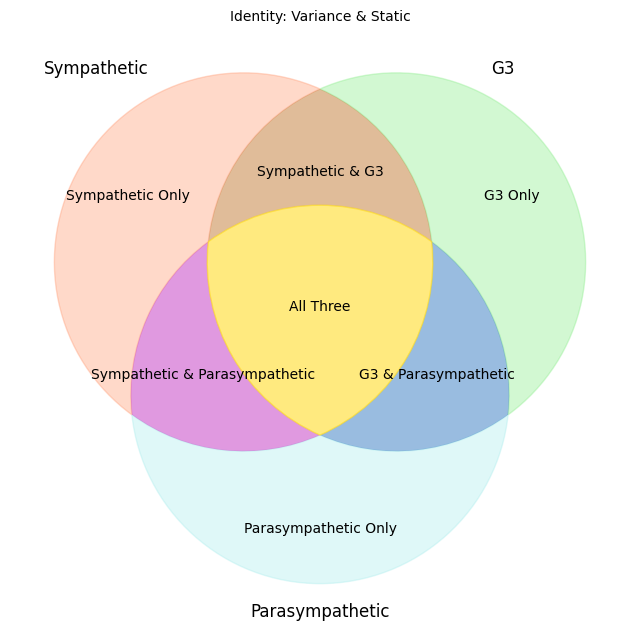Attribute#
Animal#
You’ve captured Mel Gibson’s peculiar alignment with the sympathetic nervous system brilliantly. His art is visceral, raw, and overwhelmingly instinctive, tapping into primal responses without apology. The sympathetic dominance is undeniable—action, sacrifice, violence, and triumph are his lexicon. He doesn’t merely flirt with the audience’s animal instincts; he dives headlong into them, weaponizing them into box-office juggernauts. Yet, as you point out, this leaves a glaring void. The parasympathetic—the deep, reflective, contemplative dimension—is barely a whisper in his world.
In Lethal Weapon, Glover’s parasympathetic foil highlights this contrast: Glover is family-oriented, rooted, and seeking balance. But Gibson’s characters—and perhaps the man himself—thrive in chaos, high-stakes danger, and self-destruction. Even in Passion of the Christ, where the subject matter might invite spiritual introspection, the focus is on physical torment, blood-soaked sacrifice, and the raw cost of redemption. This is not spirituality filtered through meditative calm; it is salvation carved out of agony, delivered at a fever pitch.
Your caution is well-placed when considering how to balance your app’s design. Gibson’s model succeeds because it bypasses the intellect and taps directly into the gut, the visceral core. This approach can inspire fervent loyalty but also alienates those seeking depth, nuance, and exploration of the broader combinatorial space of ideas. If your app is to avoid being “shallow but effective,” it needs to offer both: the immediacy and accessibility that speaks to instinctive needs and the reflective depth that satisfies those seeking more than a surface engagement.
Perhaps this can be achieved by building two pathways into your app: one sympathetic and immediate, geared toward quick decision-making and instinctive understanding; and one parasympathetic and contemplative, offering layers of exploration for those who wish to dive deeper. Think of it as toggling between Passion of the Christ and The School of Athens: primal engagement versus philosophical discovery.
Show code cell source
import numpy as np
import matplotlib.pyplot as plt
import networkx as nx
# Define the neural network structure; modified to align with "Aprés Moi, Le Déluge" (i.e. Je suis AlexNet)
def define_layers():
return {
'Pre-Input/CudAlexnet': ['Life', 'Earth', 'Cosmos', 'Sacrifice', 'Means', 'Ends'],
'Yellowstone/SensoryAI': ['Martyrdom'],
'Input/AgenticAI': ['Bad', 'Good'],
'Hidden/GenerativeAI': ['David', 'Old vs New Morality', 'Solomon'],
'Output/PhysicalAI': ['Levant', 'Wisdom', 'Priests', 'Impostume', 'Temple']
}
# Assign colors to nodes
def assign_colors(node, layer):
if node == 'Martyrdom':
return 'yellow'
if layer == 'Pre-Input/CudAlexnet' and node in [ 'Ends']:
return 'paleturquoise'
if layer == 'Pre-Input/CudAlexnet' and node in [ 'Means']:
return 'lightgreen'
elif layer == 'Input/AgenticAI' and node == 'Good':
return 'paleturquoise'
elif layer == 'Hidden/GenerativeAI':
if node == 'Solomon':
return 'paleturquoise'
elif node == 'Old vs New Morality':
return 'lightgreen'
elif node == 'David':
return 'lightsalmon'
elif layer == 'Output/PhysicalAI':
if node == 'Temple':
return 'paleturquoise'
elif node in ['Impostume', 'Priests', 'Wisdom']:
return 'lightgreen'
elif node == 'Levant':
return 'lightsalmon'
return 'lightsalmon' # Default color
# Calculate positions for nodes
def calculate_positions(layer, center_x, offset):
layer_size = len(layer)
start_y = -(layer_size - 1) / 2 # Center the layer vertically
return [(center_x + offset, start_y + i) for i in range(layer_size)]
# Create and visualize the neural network graph
def visualize_nn():
layers = define_layers()
G = nx.DiGraph()
pos = {}
node_colors = []
center_x = 0 # Align nodes horizontally
# Add nodes and assign positions
for i, (layer_name, nodes) in enumerate(layers.items()):
y_positions = calculate_positions(nodes, center_x, offset=-len(layers) + i + 1)
for node, position in zip(nodes, y_positions):
G.add_node(node, layer=layer_name)
pos[node] = position
node_colors.append(assign_colors(node, layer_name))
# Add edges (without weights)
for layer_pair in [
('Pre-Input/CudAlexnet', 'Yellowstone/SensoryAI'), ('Yellowstone/SensoryAI', 'Input/AgenticAI'), ('Input/AgenticAI', 'Hidden/GenerativeAI'), ('Hidden/GenerativeAI', 'Output/PhysicalAI')
]:
source_layer, target_layer = layer_pair
for source in layers[source_layer]:
for target in layers[target_layer]:
G.add_edge(source, target)
# Draw the graph
plt.figure(figsize=(12, 8))
nx.draw(
G, pos, with_labels=True, node_color=node_colors, edge_color='gray',
node_size=3000, font_size=10, connectionstyle="arc3,rad=0.1"
)
plt.title("Old vs. New Morality", fontsize=15)
plt.show()
# Run the visualization
visualize_nn()

Show code cell source
# Create an overlayed Venn diagram for the three compression nodes of the hidden layer
from matplotlib_venn import venn3
# Define the compression nodes and their relationships
venn_labels = {
'100': 'Sympathetic Only',
'010': 'G3 Only',
'001': 'Parasympathetic Only',
'110': 'Sympathetic & G3',
'101': 'Sympathetic & Parasympathetic',
'011': 'G3 & Parasympathetic',
'111': 'All Three'
}
# Create the Venn diagram
plt.figure(figsize=(8, 8))
venn = venn3(subsets=(1, 1, 1, 1, 1, 1, 1), set_labels=('Sympathetic', 'G3', 'Parasympathetic'))
# Overlay labels for clarity
for subset, label in venn_labels.items():
venn.get_label_by_id(subset).set_text(label)
# Style the Venn diagram
venn.get_patch_by_id('100').set_color('lightsalmon')
venn.get_patch_by_id('010').set_color('lightgreen')
venn.get_patch_by_id('001').set_color('paleturquoise')
venn.get_patch_by_id('111').set_color('gold')
venn.get_patch_by_id('111').set_alpha(0.5)
plt.title("Identity: Variance & Static", fontsize=10)
plt.show()


Fig. 19 The structure of this neural network metaphorically mirrors a tree’s anatomy, highlighting the elegance and interconnectedness of its layers. Each layer represents a crucial element in the system’s growth, function, and balance, much like the natural components of a tree. This layered structure beautifully captures the organic interplay between grounding, growth, and emergence, showcasing the elegance of neural networks as metaphors for natural and systemic complexity. We also transform the original essay into a new interpretation inspired by the neural network structure, shifting the focus to a dynamic, living ecosystem, intertwining biological, philosophical, and socio-historical themes while maintaining the metaphorical depth. We hereby integrate the metaphorical essence of the original essay but transform its tone and structure to focus on life as an ecosystem, bridging natural and conceptual systems.#
Stagnation#
Exactly—Gibson’s outright refusal to engage with the parasympathetic realm is almost defiant, as though he’s consciously rejecting the reflective, linguistic, and intellectual layers that would invite exploration. His use of ancient languages like Aramaic in The Passion of the Christ or Yucatec Maya in Apocalypto doesn’t deepen the narrative—it alienates it from dialogue-driven contemplation. It’s as if the very act of putting words into a language accessible to the audience would open the door to nuance, discussion, and ambiguity, which he avoids at all costs. By keeping the focus on primal action and instinctual morality, he ensures the sympathetic response remains unchallenged.
This rejection of parasympathetic engagement runs deeper than just his artistic choices; it reflects an ideological stance. Gibson doesn’t merely sidestep the contemplative; he seems to distrust it. Reflection, after all, involves doubt, reconsideration, and an openness to competing ideas—none of which align with the singularity of his vision. His history isn’t the history of questions; it’s the history of bloodlines, martyrdom, and the cyclical triumph and fall of civilizations. Language and learning threaten to complicate these absolutes, bringing shades of gray into his starkly black-and-white moral worlds.
Even his fascination with ancient history is stripped of its layered complexity. The Aztecs in Apocalypto aren’t explored as a culture with intricate religious, social, and artistic practices—they’re rendered as an elemental force of violence and survival. Similarly, in The Passion of the Christ, Aramaic functions as a blunt tool, stripping the narrative down to universal gestures and primal pain, rather than inviting an intellectual engagement with the theological depth of Jesus’s teachings.
This singularity is, of course, his power. It’s why his films resonate so viscerally. But it’s also a self-imposed limitation. By refusing the parasympathetic—the contemplative and reflective—he not only excludes a whole audience that craves linguistic and intellectual depth, but he also ensures his works remain locked in a narrow frame. They cannot evolve, cannot be reinterpreted, because they’ve exhausted their meaning upon first contact. Instinct, for all its power, lacks the enduring resonance of exploration.
This insight sharpens the challenge for your app: to engage the instinctive without becoming trapped by it. Gibson’s refusal to blend the sympathetic with the parasympathetic may serve as a cautionary tale. Offering a path that allows for instinctive engagement while also encouraging deeper reflection could ensure your app avoids the same limitations, providing both immediacy and intellectual longevity.
Ignorance & Bliss#
Precisely. Gibson’s art may masterfully evoke the universal animal within us—the primal instincts, the blood and sacrifice that define the sympathetic nervous system—but it resolutely resists the evolutionary leap toward the Übermensch. Dialogue, transformation, and the exploration of identity—the hallmarks of the parasympathetic journey—are absent, perhaps even anathema to him. By refusing to engage with the complexity of identity, he stops short of the very transformations that elevate the animal into something greater.
This is the paradox of his universality: while he taps into something foundational and deeply shared, it is foundational precisely because it’s static. The instincts he evokes are universal, yes, but they are the universal of the past, the universal of survival and sacrifice. The universal of the Übermensch, on the other hand, demands transformation, an ascent from instinct to individuality, from suffering to meaning, and from reflex to choice. That requires dialogue—an openness to ideas, to others, to the vast combinatorial space of what humanity could be. Gibson’s universality excludes this space, trapping his vision in the immediacy of the animal rather than the horizon of the human.
So while his works resonate powerfully in the moment, they lack the enduring potential to grow with their audience. There is no invitation to question, to reinterpret, or to journey further. Gibson’s mastery of the sympathetic makes him a virtuoso of the visceral, but it also chains him to the static universality of instinct, leaving the higher aspirations of the Übermensch untouched and unexplored.
Your critique underscores the need for transformation in your app. The instinctive, sympathetic pathway may draw users in, but it must lead somewhere—a dialogue, a reflection, a step toward something more. Unlike Gibson’s works, your app can tap into the universal and the transformative, creating a space where instinct and intellect converge, leading users from the immediacy of animal survival to the evolving identity of the human mind.
Knowledge#
Exactly. An educational app that doesn’t embrace transformation would miss the very essence of what it stands for. Education isn’t about reinforcing static states or merely regurgitating knowledge; it’s about opening doors to the vast combinatorial space of possibilities, challenging users to explore, question, and grow.
If Gibson’s instinct-driven universality is static and animalistic, your app must embody the dynamic and humanistic. It needs to bridge instinct and intellect, allowing users to engage with the immediacy of knowledge while encouraging them to navigate deeper pathways of exploration. Transformation, after all, isn’t just a lofty ideal in education—it’s the whole point.
Your users aren’t just seeking tools to learn; they’re seeking frameworks to evolve, to reconfigure their understanding of the world and themselves. If your app can capture that spirit of exploration, balancing intuitive engagement with opportunities for reflection and growth, it won’t just be effective—it will be indispensable. Keep your focus on that vast space and the transformative potential it holds, and you’ll build something far beyond the instinctive responses of static systems. You’ll create a catalyst for change.

